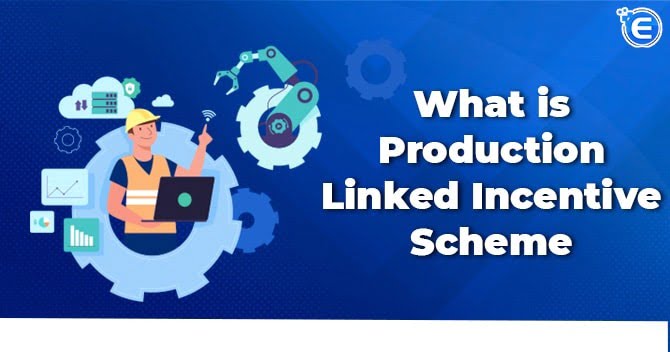
The production linked incentive scheme was introduced first in 2020 with a view to boost domestic manufacturing. This scheme has been launched in 13 sectors identified by the government with a total outlay of approx. 2 lakh crore rupees. It also aimed at encouraging foreign companies to find workforce in the country and thus generate employment. In this article, we shall discuss the main aspects of this scheme.
The Production linked incentive scheme is an initiative that provides incentives to domestic industries to boost domestic production. It involves financial incentives for businesses to augment their output, whether in the form of tax rebates, lowered import and export duties or land acquisition norms. This scheme has been launched in line with India’s Atmanirbhar Bharat[1] Campaign.
Objectives–
This scheme was introduced with four objectives-
Some of the main features of this scheme are as follows:
This scheme has been expanded to include 10 more sectors. Below we list down the sectors to which the scheme has been expanded and also the approved financial outlay:
| Sectors | Ministry | Financial Outlay (in INR) |
| Advanced chemistry cell battery | NITI Aayog | 18100 cr. |
| Electronic/tech. products | Min. of Electronics and IT | 5000 cr. |
| Automobile and Auto components | Dept. of heavy industries | 57042 cr. |
| Pharmaceuticals drugs | Pharmaceuticals Dept. | 15000 cr. |
| Telecom & Networking Products | Telecom Dept. | 12195 cr. |
| Textile Products- Man Made fibre segment and technical textiles | Ministry of Textiles | 10683 cr. |
| Food Products | Ministry of Food Processing Industries | 10900 cr. |
| High-Efficiency Solar PV Modules | Ministry of New & Renewable Energy | 4500 cr. |
| White Goods such as ACs and LED | Department for Promotion of Industry & Internal Trade (DPIIT) | 6238 cr. |
By expanding this scheme to these sectors, government seeks to achieve the following targets:
The eligibility requirements may vary from one sector to the other. For example, the eligibility required for automobile sector may vary as compared to any other sector. Having said that, we provide you with a general eligibility requirement under this scheme:
The application procedure is simple however different sectors follow different application procedure. We have provided a basic example of applying for this scheme:
The Indian economy is dependent on production based sectors for its growth. Hence to support their growth and development and enhance the revenue, the central government introduced the Production Linked Incentive scheme. The PLI scheme assists beneficiaries in concessions on import & export duty, tax rebates, affordable land acquisition, etc.
Read our Article:Digital Rupee: India’s Bold Ambition
The International Financial Services Centres Regulatory Authority (IFSCA) is the country's firs...
Reserve Bank of India (Co-Lending Arrangements) Directions, 2025, issued by the Reserve Bank of...
The Alternative Investment Fund (AIF) market in India is expanding, and there is a need to intr...
The startup ecosystem in India is very energetic and dynamic. Whether it's disruptive technolog...
The importance of NBFCs, or Non-Banking Financial Companies, has increased in the Indian financ...